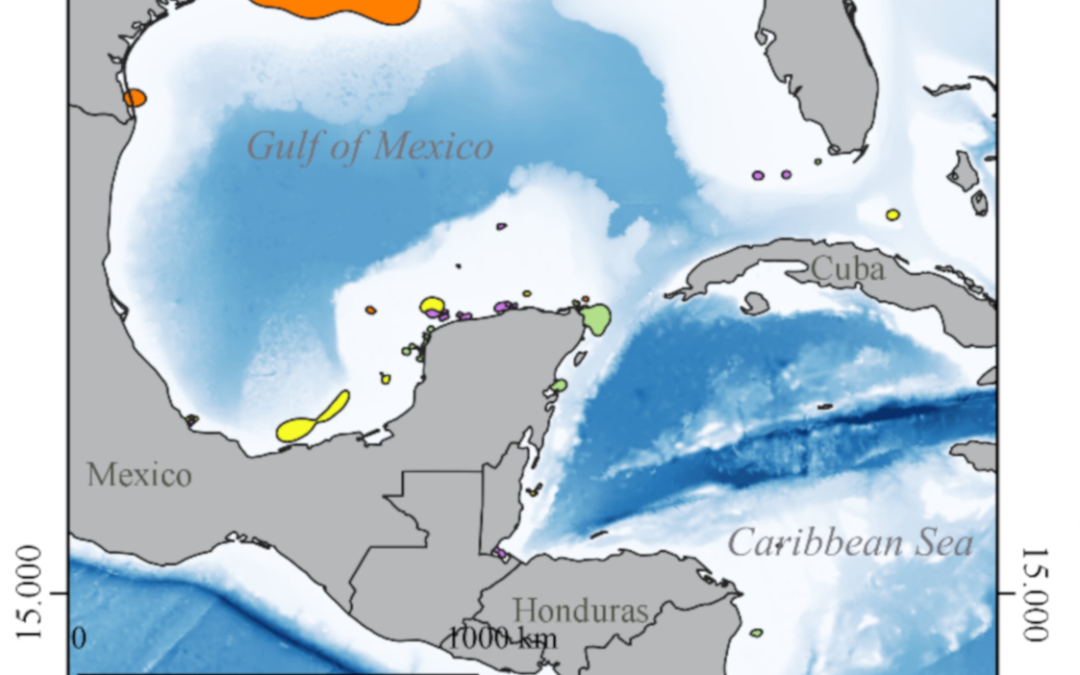Authors: Abigail Uribe-Martínez, María de los Ángeles Liceaga-Correa and Eduardo Cuevas
https://doi.org/10.3390/jmse9080793
Abstract
Marine turtles are globally endangered species that spend more than 95% of their life cycle in in-water habitats. Nevertheless, most of the conservation, recovery and research efforts have targeted the on-land habitats, due to their easier access, where adult females lay their eggs. Targeting the large knowledge gaps on the in-water critical habitats of turtles, particularly in the Large Marine Ecosystem Gulf of Mexico, is crucial for their conservation and recovery in the long term. We used satellite telemetry to track 85 nesting females from their beaches after they nested to identify their feeding and residency habitats, their migratory corridors and to describe the context for those areas. We delimited major migratory corridors in the southern Gulf of Mexico and West Caribbean and described physical features of internesting and feeding home ranges located mainly around the Yucatan Peninsula and Veracruz, Mexico. We also contributed by describing general aggregation and movement patterns for the four marine turtle species in the Atlantic, expanding the knowledge of the studied species. Several tracked individuals emigrated from the Gulf of Mexico to as far as Nicaragua, Honduras, and the Bahamas. This information is critical for identifying gaps in marine protection and for deciphering the spatial connectivity in large ocean basins, and it provides an opportunity to assess potential impacts on marine turtle populations and their habitats.
Keywords: critical habitat; home range; space use; animal movement; spatial ecology; satellite telemetry


Recent Comments